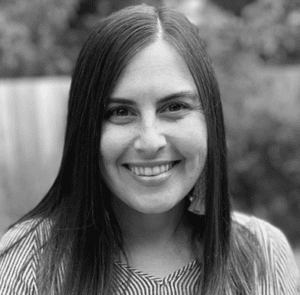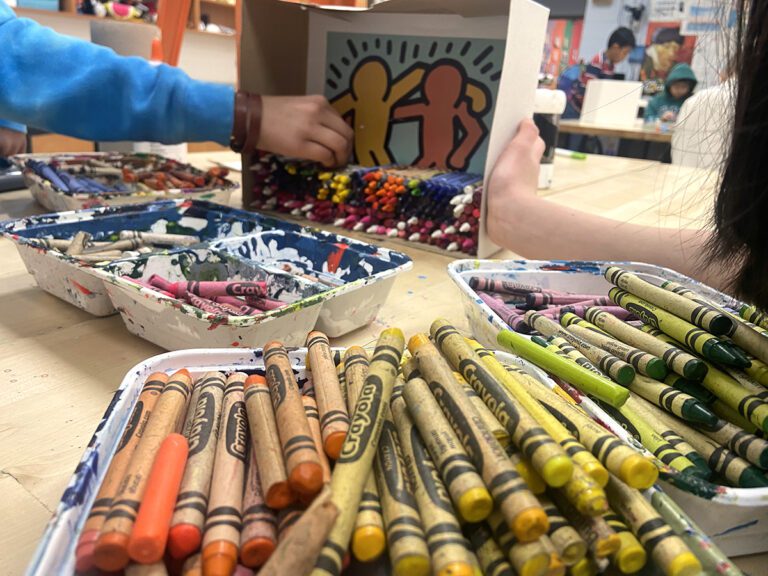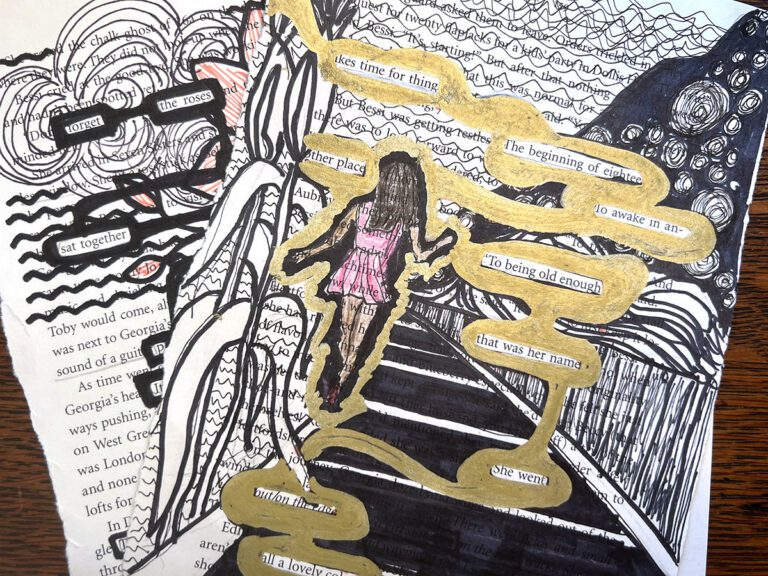Note: Be sure to review all resources and preview all artists before determining if they are appropriate to share with your students.
Have you heard about cronuts, cruffins, or brookies? Sweet tooth enthusiasts may recognize these as popular hybrid desserts. They each take inspiration from another dessert to form something new and delicious. Isn’t contemporary art like this too? Artists throughout time tip their hats to the past while re-inventing a style that personifies their ideas. You may be familiar with Banksy’s parody of art history masterpiece, Johannes Vermeer’s Girl with a Pearl Earring. If you’re looking for more exciting artists who merge past and present, you’re in luck!
Get inspired and see how the past inspired artists of today. Check out these seven contemporary artists and their historical influences.
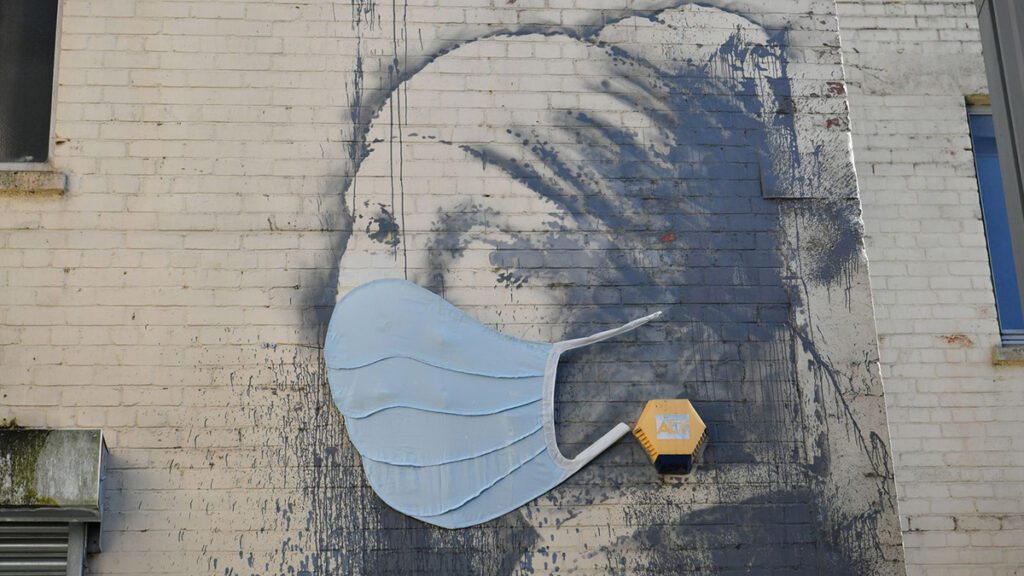
1. Yvette Mayorga
Yvette Mayorga is a contemporary Latinx artist. She perfectly merges her maximalist style with the Rococo Period. Maximalism is excessive yet carefully curated with eclectic and bold combinations. The Rococo Period originated in France during the early 1700s and sports ornamental and over-the-top decor. While both styles are from vastly different parts of history, they share a passion for the theatrical.
For even more art history inspiration from the past, Mayorga looks to portraits of white, European women for her compositions. Francois Boucher’s Madame de Pompadour from 1756, shows King Louis XV’s mistress reclining in a decadent room. She is elaborately dressed with a stocked bookshelf in the background to show that she is not only beautiful but intelligent. Mayorga’s Resting Scroll depicts her sister in a very similar pose, doom scrolling on her phone. Instead of books, there is a smartphone and a laptop, nodding to the lavish world of technology we now live in. Mayorga uses a unique piping process that combines art and confectionary techniques. She incorporates items into the artwork itself that also gives homage to a luxurious lifestyle including acrylic nails, false eyelashes, rhinestones, and car wrap vinyl.
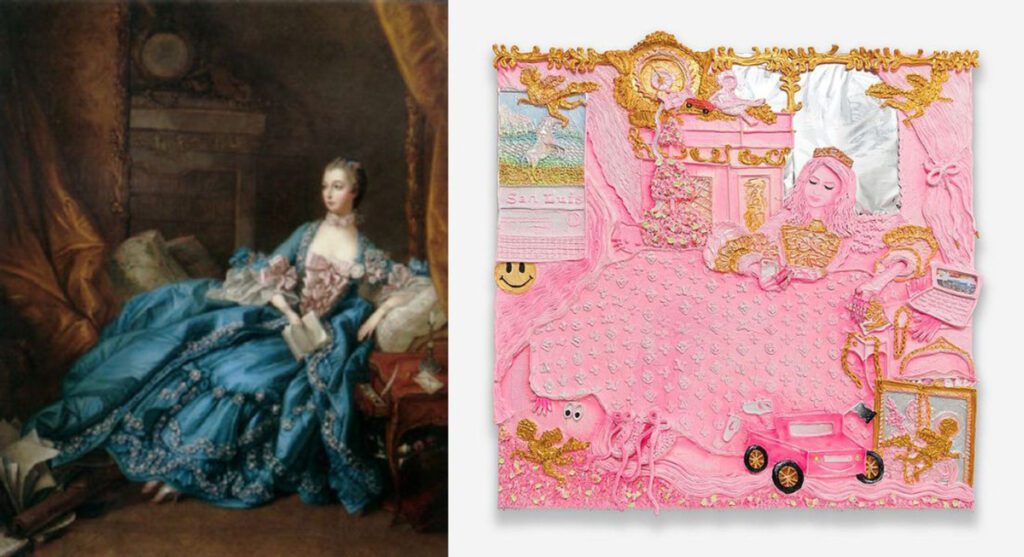
https://themomentary.org/calendar/yvette-mayorga-what-a-time-to-be/
2. Sean Molloy
Sean Molloy is an Irish artist inspired by how technological advances have impacted art throughout history. When photography was invented in the 1800s, it impacted the practice and purpose of painting. Painting realistic portraits was no longer needed and painters started using photography techniques like cropping and asymmetrical compositions. He also takes work from the Baroque Period and plays with the juxtaposition of digital elements with C.G.I., pixelation, and neon “glitches” and streaks.
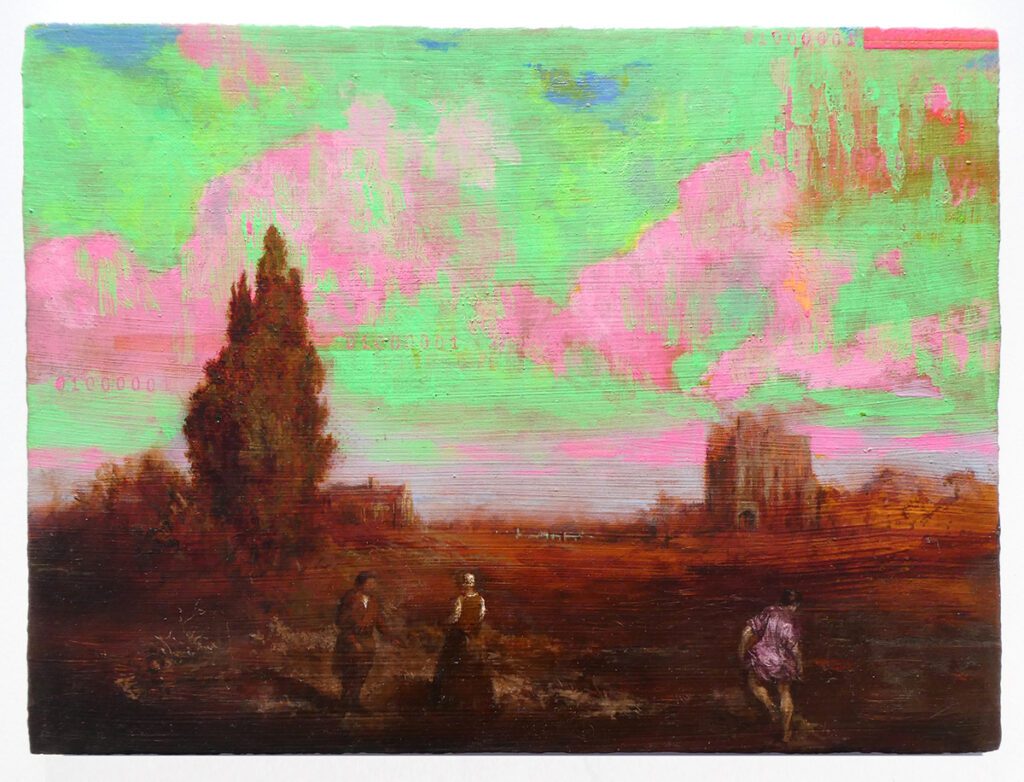
3. Marco Battaglini
Marco Battaglini is an Italian artist who describes himself as a dreamer. His artwork uses digital elements, acrylic paint, and airbrushing, and subjects from the Classical and Neoclassical Periods in front of graffiti backgrounds. He combines artwork and elements from different periods to merge heaven and the ghetto and transcend time.
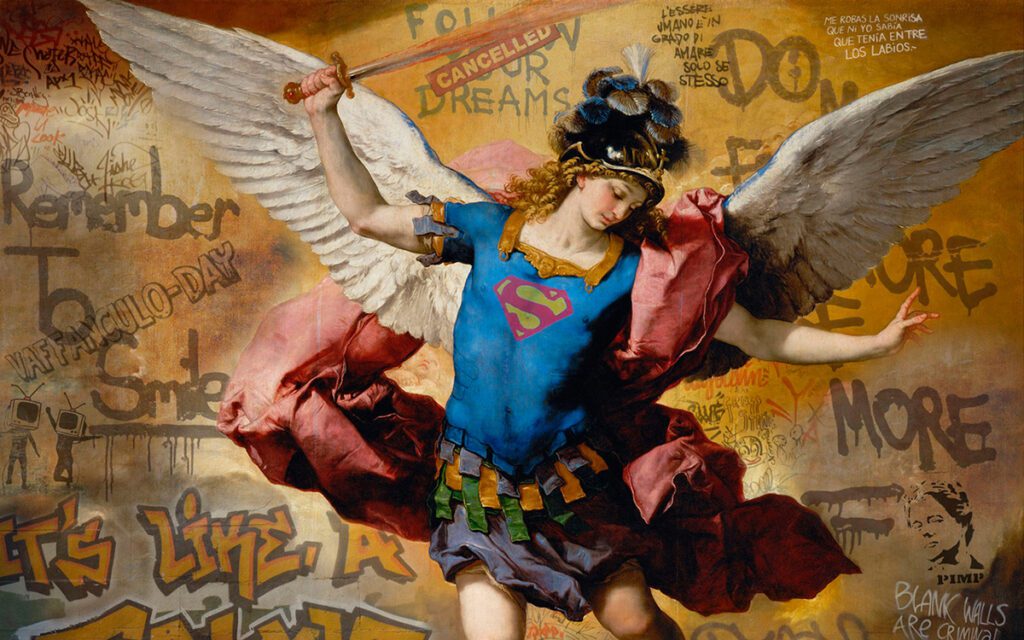
4. Leo Caillard and Alexis Persani
Two contemporary artists, Leo Caillard and Alexis Persani, collaborate to dress ancient sculptures in modern clothing. Caillard photographs statues and Persani adds trendy clothing to them with Photoshop. This idea originally surfaced when Caillard asked the Louvre if he could dress up their statues. While the museum thought it was an interesting idea, they ultimately told him no. This is a fun series that brings historical sculptures back to life!
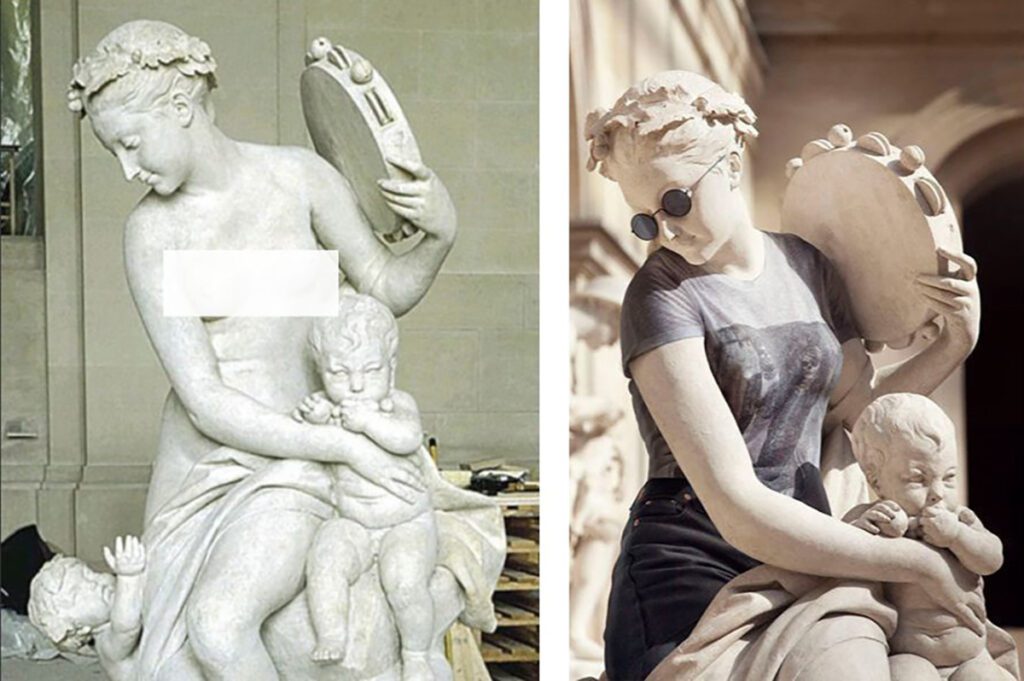
https://www.leocaillard.com/artworks.html
5. Ai Weiwei
Ai Weiwei makes massive installations with multiples of one item. In this particular piece, Weiwei took inspiration from Impressionist artist, Claude Monet. He recreated a waterlily painting out of 650,000 plastic building bricks almost 50 feet wide! Changing the medium packs a punch. Originally a soft painting full of brushstrokes, this updated rendition is more geometric and pixelated.
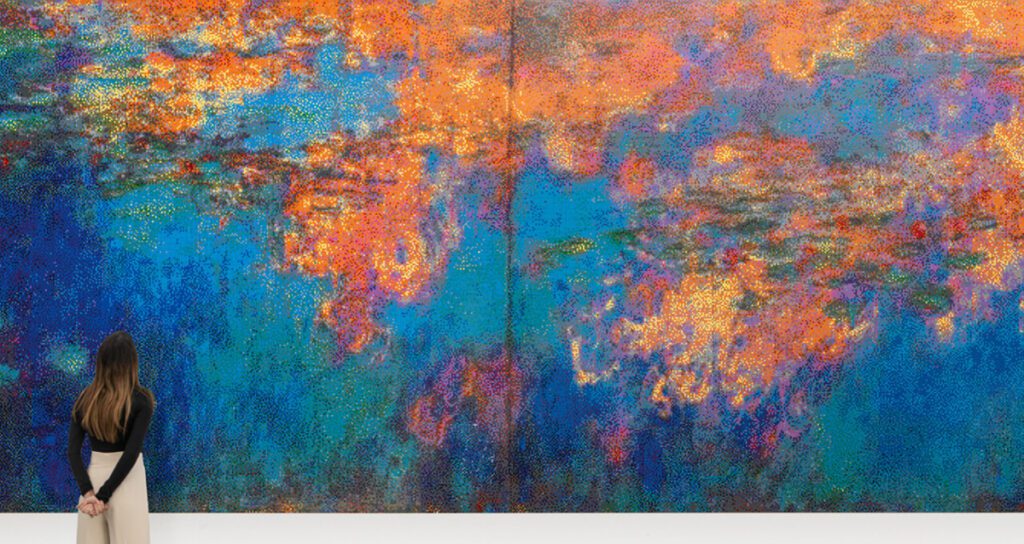
If you’d like to bring this unexpected art duo to your students, we have good news! FLEX Curriculum has artist bios for both Claude Monet and Ai Weiwei. FLEX artist bios are student-facing biographies and include famous works, a brief history, a career overview, and more. There is no need to spend time reinventing the wheel—fill out a quick contact form to learn how to get artist bios for your students.
6. Kehinde Wiley
Kehinde Wiley is a contemporary portrait painter, known for his presidential portrait of Barack Obama. He substitutes people of color in traditional European portraits. He often grabs his models off the street and has them select the composition they want to pose in. Wiley keeps their urban clothing and adds a floral background. Check out more of Wiley’s work next to their influential historical pieces.
Wiley took cues from El Greco’s The Annunciation in this piece which is part of the Black Light series. The Annunciation is a famous Christian scene depicting the angel approaching Mary to tell her she will give birth to Jesus.
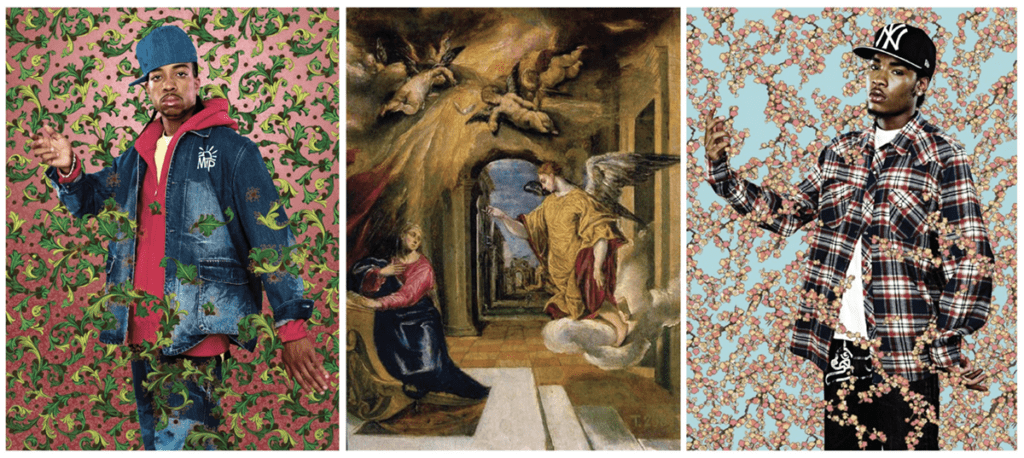
7. Daniel Arsham
Daniel Arsham is a contemporary sculptor. He is fascinated at how Easter Island statues resist erosion despite a creation date of 1300-1600 CE. Arsham brings science and art together to make eroded crystal pockets. He combines them with plaster, quartz, and volcanic rock to create sculptures mimicking Classical Greek and Roman art or pop culture items like a boom box or camera. These artworks represent Arsham’s quest for the perfect balance between beauty and decay.
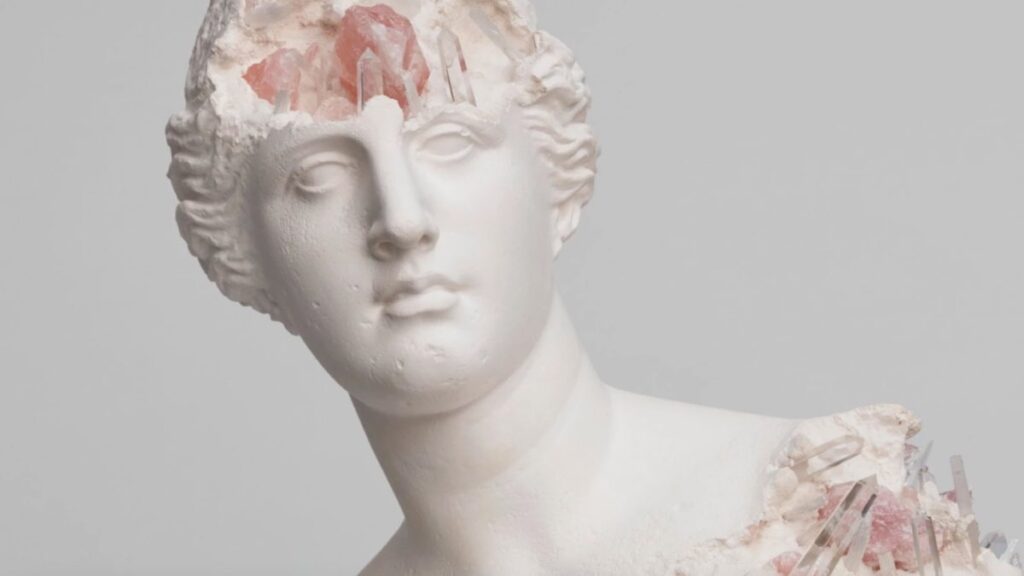
Add these artworks to an existing unit or lesson for a fresh update, or dig deeper into these artists and their intent. Hear from other art teachers on this topic (1, 2, 3, 4), and then, invite your students to a meaningful conversation about influence versus appropriation.
Here are a few questions to get the ball rolling:
- Define inspiration and appropriation.
- Is it okay to draw inspiration from other artworks?
- When does an artwork go from inspiration to appropriation?
- Is artwork original if it’s based on an existing artwork?
- If an artwork references another, who should receive the profit/credit?
- Should an artist ask permission before appropriating an idea or image?
- Does being an artist mean all of your ideas are 100-percent your own?
Artists have been drawing inspiration from the past since, well… the creation of art. Add these seven artists to your artist bank. The next time you’re looking to merge past and present to make art history relevant and interesting, break out one of these artists. Investigate how Yvette Mayorga uses confectionary techniques to make Rococo-style artworks. Or, explore how Leo Caillard and Alexis Persani take famous sculptures and digitally dress them in modern-day hipster outfits. If you’re feeling brave, open up a conversation about artistic influences and appropriation. Then, have fun with your students with these activities.
What other artists or artworks would you add to this list?
How do you approach conversations about inspiration versus appropriation in the art room?
Magazine articles and podcasts are opinions of professional education contributors and do not necessarily represent the position of the Art of Education University (AOEU) or its academic offerings. Contributors use terms in the way they are most often talked about in the scope of their educational experiences.

